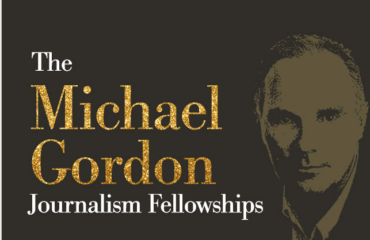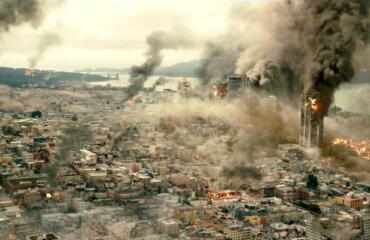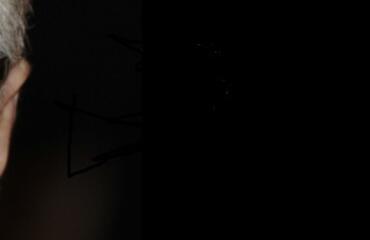Iremember the first time I thought about getting older, like really thought about getting older. I had just turned 21 and was endeavouring to fill in the gaps in my cinematic knowledge. An integral part of this quixotic project was marathoning John Hughes’ 1980s teen films Weird Science, Ferris Bueller’s Day Off and The Breakfast Club.
What struck me at the time was that the dramatic stakes in Hughes’ films are both ridiculously heightened and reassuringly confined. The family house of Weird Science gets completely trashed, but it’s magically restored just as Mum and Dad return from their weekend away.

The hangover comes when you realise that life is not like that, not at all. We are, all of us, growing older, a banal and terrifying truth that was reinforced when I Googled the hell out of The Breakfast Club, its cast and director and discovered that Anthony Michael Hall is now in his mid-40s, Molly Ringwald is an Agony Aunt for The Guardian and John Hughes is dead.
There is always a slightly addictive melancholy at work when watching a film about teenagers when you’re not a teenager. Maybe that’s why so many twentysomethings are still obsessed with Harry Potter. It’s not that they don’t want to grow up, it’s that they’re addicted to being implicitly reminded that they are.
Which brings me to Larry Clark’s latest provocation, The Smell of Us. There’s not much to the plot, really: a bunch of teenagers in Paris pass time skating, getting wasted, working as rent boys, having sex, trashing a rich man’s house and walking around naked.
Whereas John Hughes’ depiction of middle class teenagehood is both more dramatic and reassuringly safer than the reality, Clark’s vision is far more confronting. These teenagers aren’t learning to love themselves in detention. They’re whoring themselves out to businessmen, and filming themselves doing it.
What’s confronting about The Smell of Us is that it’s really got nothing to do with teenagers and everything to do with Clark. He is a man acutely aware of his age (72). The giveaway is the film’s opening shot, which spirals above Clark’s body, lying sprawled on the ground as teenagers jump over him on their skateboards.

Slowly, he drags himself to shade. In a later scene, he wets himself. There’s nothing edifying about his onscreen appearance.
There’s nothing edifying about his vision of youth either.
The youthful bodies are captured in lingering shots of bare torsos and barely concealed crotches. Most disturbingly, it feels like the energy powering The Smell of Us comes not from the young actors, but somewhere deep inside Larry Clark’s perverted fantasies about them.
That these fantasies extend to a scene were Clark himself sucks the toes of a bemused teenage boy shows just how painfully, disgustingly honest he is about himself.
Similarly provocative is Gaspar Noé’s 2009 cult film Enter the Void, playing as part of MIFF’s Psychadelic! sidebar and in tandem with the director’s latest movie, the “3D porn film” Love 3D.
Enter the Void is notable insofar as it represents the pinnacle of Noé’s gimmick-driven brand of auteurism. He packs so many gimmicks into proceedings that it’s a slight miracle Enter the Void feels like a coherent film.
The first gimmick Noé employs is the illusion of shooting everything in one take, from a first person perspective. In the film’s prologue, the camera sits inside the eyes of a young American drug dealer in Tokyo. It’s not a spoiler to say that 20 minutes into the film he dies, and for the rest of the movie the camera embodies his spirit, floating above, around and even inside the characters he left behind.

It is when this floating camera starts probing lead actress Paz de la Huerta’s body that Noé’s at his most offensive. In one scene the camera floats for a bit in the place of somebody having sex with her. In another scene he places his camera inside her vagina.
The film’s other major gimmick is its violent combination of colours and sound. Noé takes the stereotypical western vision of Tokyo as a neon wonderland and emphatically burns it into celluloid — and our retinas. His frames are frequently packed with fluoro lights bleeding into one another, underscored by a thumping electronica soundtrack. If the casual misogyny doesn’t give you a headache, the lights and noises will.
Similarly discomforting, though far more interesting, was last Friday’s Vertical Cinema screening. Vertical Cinema is as the name implies: a screen is flipped to be oriented vertically, rather than horizontally, giving the appearance of a giant blank monolith floating in the air. The collection of short films screened revelled in the creative possibilities of this deceptively simple conceit.
The entire experience was designed to put the audience in a heightened, anything-goes mood. We were in a specially formatted venue — the Deakin Edge space in the middle of Federation Square. As we lined up beforehand, volunteers warned us that things could get loud, and handed out earplugs.

Judging by the volume of walk-outs at intermission, MIFF was only moderately successful at putting us into the right mood. Which is a shame, because not only was Austrian Vertical Cinema filmmaker Joost Rekveld inside the room, but the second half of the program was far stronger than the first.
Tina Frank’s Colterrainwas a particular highlight. Frank employs a complicated technical process which turns sound into colour, so that what you’re watching is also what you’re hearing, and vice versa.
This unification of sight and sound makes Colterrain intensely hypnotic. For 10 minutes and 20 seconds nothing existed beyond the senses manipulated by the monolith.
Other films had the opposite effect. Joost Rekveld’s #43was at times highly symmetrical, a film acutely aware of its screen. This awareness had a somewhat alienating affect: I, too, became conscious of the screen. Which meant I became aware of the screening space, which meant that thanks to the Deakin Edge’s giant glass walls, I became aware of Melbourne’s CBD.
The eclectic nature of the films screened both seduced me into the screen and expelled me into the city. This wild oscillation from hypnotism to alienation made the experience of Vertical Cinema a condensed, heightened simulacrum of the urban experience.
City of Gold is a documentary that takes as its subject LA Times food critic Jonathan Gold, who was a guest of MIFF. In his introduction to the screening, Gold said that the film is just as much about Los Angeles as it is about himself, a point reinforced by the remarkable depth of knowledge he has about the city’s food.

In one stunning sequence, Gold drives through the outer suburban sprawl of the city, and comments on the quality of food at seemingly every eatery he passes. The guy knows his food, and he knows his city.
A trait common to many of the greatest critics, Gold is so totally obsessed with one thing that it has comprehensively taken over his life.
City of Gold might be fairly conventionally shot (is there a rule that every documentary this year must include drone shots of cities soaring from the street to the sky?) but it’s a very enlightening and entertaining watch, much like the man himself.
The film’s highlight undoubtedly comes towards the end, when Gold reads from a piece he wrote immediately after the 1992 Los Angeles riots. There’s a reason he became the first Food Critic to win a Pulitzer prize.
By the end of MIFF, film festival fatigue had well and truly set in. So too, a lingering sense that outside the festival bubble, none of this particularly mattered. In the midst of social media hysteria, it’s easy to think that MIFF is Melbourne, and Melbourne is everything.
It was in this if not pessimistic then reflective mood, that I re-watched Angels of Revolution, the Russian film I enthused about at length back in Volume 1 of this diary.

Re-watching movies always induces a certain amount of anxiety. There is the dread that comes from questioning your original response to the film. Was it as good as you remember? Were its truths as revelatory as you originally thought? What if you were being overenthusiastic, hyperbolic in your praise?
Re-watching a film also works to strip it just a bit more of its mystique. A film’s more confusing, enigmatic moments are clarified just a bit. Its ending is slightly less shocking, you’re slightly less enamoured with its visual look, slightly more tired of movies in general.
Angels of Revolution held up fine, of course. But it wasn’t quite the exhilarating experience it originally was.
So it is with film festivals. After a relative cultural drought, the first week can feel like a sublime revolution. But soon enough, as with all things, the law of diminishing returns sets in.



